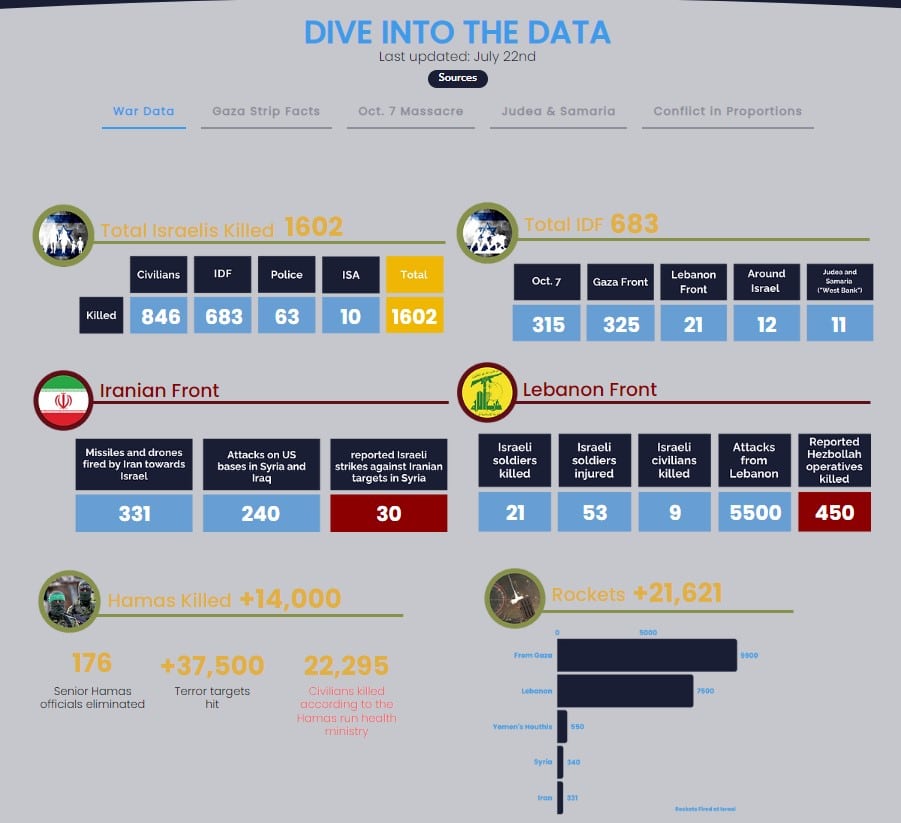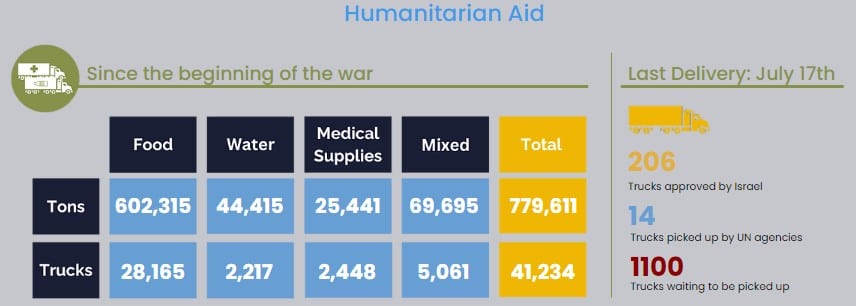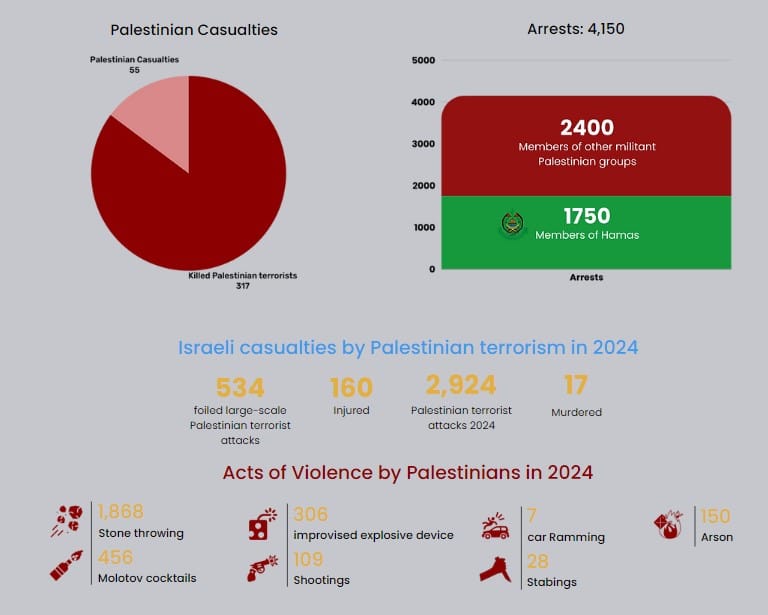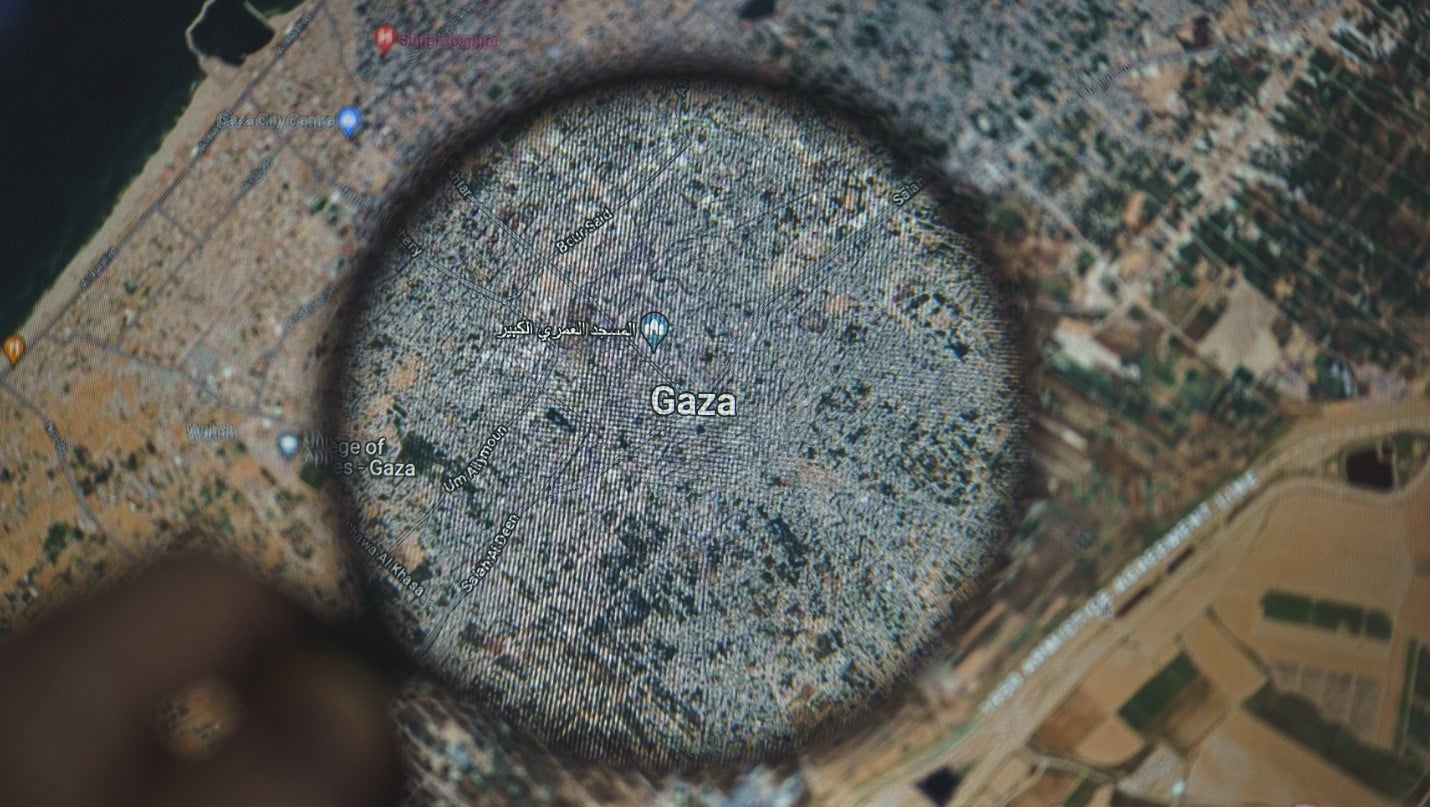
Executive Summary
- Israel has got to move on to the next level in the Gaza arena and strive decisively to obtain the war’s objectives, collapsing Hamas’ military and governmental capabilities, targeting its leaders, bringing back all the hostages, and ushering in the conditions for the “Day After” in Gaza. That, by imposing an immediate provisional Israeli administration in the areas conquered in the Strip, it must focus its efforts on the remaining territory and outline a clear plan for long-term eradication of terrorism.
- The high-intensity phase of the war is progressing toward the long-term “clearing” phase. However, part of Hamas’ combating force, alongside that of the PIJ and other terrorist groups, is still functioning, and vast areas in central Gaza have yet to be conquered and cleared. The Rafah operation is yet to be completed, and various areas in the north and the south that had been cleared continue to constitute a hot zone for a re-emergence of terrorist nests. This will enable the redirection of the lion’s share of military force to the north.
- The Israeli interest for the “Day After” in Gaza is clear:
- Military presence for the sake of long-term eradication of terrorism. Leveling will militarily control the Strip while retaining control along the Philadelphi Corridor, the Netzarim Corridor, a perimeter along the border and other areas as will be decided. There is no practical possibility for re-disengagement from the Gaza Strip. Slogans such as “Rehabilitation in exchange for demilitarization” have no currency without Israeli boots on the ground, which will ensure the demilitarization is fully implemented and that it is maintained over time.
- Gaza Stabilization Mechanism: a provisional Israeli Administration that will prepare the groundwork for future local civilian Palestinian forces. The Administration will be integrated under a single directorate accountable to the Cabinet. It will be charged with preparing the groundwork for the day after in the Strip in cooperation with international players and in accordance with Israeli interests.
- This mechanism should be enacted gradually, as per neighborhood-based “pilot” models, and systematically enact it on all other parts of the Strip, both in order to accumulate experience and learn the mechanism, and to create a parallel between a successful model in an Israeli-run area to a failing model that brings suffering on the population in a Hamas-run area.
- Removal of UNRWA from the Strip and distribution of humanitarian aid directly by the IDF or by whichever organizations it will certify for this purpose, a form of “he who hands out is he who governs”.
- There is no practical way of introducing the Palestinian Authority into Gaza, neither in terms of intra-Palestinian legitimacy nor in terms of Israeli security interests. Its imploding control in areas in Judea and Samaria it is supposed to be administering today indicates above all its inability to effectively control Gaza.
- De-radicalization of the education system, which will ideally include non-UN regional and international players.
- Allowing the option for Gazan Palestinians to voluntarily emigrate to countries willing to admit them, while equalizing the terms for their acceptance with those of the rest of the global population.
- The Israel Defense and Security Forum considers unity to be an overriding national imperative as a key factor in achieving victory in this war. The spirit of the fighting troops is what makes the impressive battlefield achievements possible, and national cohesion, under the banner of “Together we win”, are a fundamental condition for harnessing the public and the state organs in favor of achieving the objectives of this war. We call on the general public, its elected officials, and the State apparatus, to put aside political considerations, to abstain from disrupting public order, to support our soldiers, and to rise to the occasion.
- In our professional opinion, the State of Israel has no option of ending the war in Gaza with an outcome that falls short of victory, meaning fulfillment of the war’s objectives as these have been defined.
- The international pressure on Israel to work toward a ceasefire and to establish a Palestinian State is totally divorced from the Middle Eastern reality. Rewarding terrorism in the form of a Palestinian state will substantially undermine Israeli security.
- This paper deals with the Gaza arena from the military and administrative standpoints, in the context of the totality of the combat factors: Lebanon, Iran and the region, Judea and Samaria, the international arena and public opinion.

Next steps in Gaza – Immediate Timeframe (up to 3 months)
- Operational: Concentrate the effort on areas as specified by the military, in consultation with the political echelon, and in particular complete takeover of Rafah and the planning of the campaign in central Gaza. The high-intensity phase of the war is progressing toward the long-term “clearing” phase. However, part of Hamas’ combating force, alongside that of the PIJ and other terrorist groups, is still functioning, and vast areas in central Gaza have yet to be conquered and cleared. The Rafah operation is yet to be completed, and various areas in the north and the south that had been cleared continue to constitute a hot zone for a re-emergence of terrorist nests. This will enable the redirection of the lion’s share of military force to the north.
- Hostages:
- Keep an open door to the possibility of a hostage swap, even at the cost of a brief, temporary withholding of fire. Should such an agreement materialize, it must include the speedy release of live hostages in exchange for humanitarian easements or the release of a certain number of prisoners who are in any case scheduled for release in the near future. Israel is not going to be able to accept a comprehensive deal that includes stopping the war and withdrawing its forces, or which will impose a long-term lull in the fighting. This would halt the war momentum, would exacerbate internal rifts and would not yield a return of all the hostages from Gaza under any deal currently on the table.
- IDSF-Habithonistim maintains that increased military pressure can impose on Hamas more favorable conditions for Israel to conclude a deal. That, alongside possible mitigation of the humanitarian aid, in particular fuel.
- The intelligence and combat effort to find and rescue hostages has got to continue.
- Preparing for the “Day After”: installing a provisional Israeli administration
- Israel must immediately impose a provisional Israeli administration throughout the Gaza Strip, particularly in areas that have already been occupied and cleared by the IDF.
- A Government decision must be adopted, setting up a directorate that will integrate the management of the provisional Israeli administration, reporting to the political-security cabinet. It must include representatives from the Israeli security forces, the relevant government ministries and civilians with relevant background. As opposed to the Israeli Civilian Administration and the security circumstances in Judea and Samaria or in pre-Oslo Accords Gaza, the effort will be directed with the participation of military and political entities, rather than a tactical unit under the IDF. This will be done in order to integrate a “narrow” operational perspective within a broader political perspective.
- The provisional administration will be charged with preparing the groundwork for the “Day After”.
- In the absence of such a mechanism, there will be a vacuum left behind on the ground, which will be exploited by Hamas. This will constitute a severe psychological blow to Israel, which will be detrimental to our advocacy efforts with the United States and with the international community regarding realizing the objective of the war: demilitarization of Gaza and creation of the conditions for ensuring the Strip never again becomes a terror hotbed.
- This mechanism will allow local elements in Gaza to realize that Israel is serious in its intention to bring about the downfall of Hamas and that it does not intend to permit a situation in which Hamas once again takes over the Strip long-term.
- Israeli jurisdiction can be applied to certain neighborhoods in the northern Strip as a pilot, following which this will be rolled out to the rest of the Gaza Strip.
Civilian Control over Gaza – Mapping – Special Investigation, the IDSF Research Department
For the complete investigation >>
- After eight months of war in the Gaza Strip, three kinds of zones have taken shape there, where each one functions differently from the civilian perspective: administration by Hamas or by its proxies; local administration; and pockets of chaos. Wherever the IDF is absent, the municipalities are the leading factor in managing civilian life. These bear variable degrees of affinity to Hamas. The international aid agencies also play a key role in this context.
- The pockets of chaos have formed around the humanitarian aid: It has been proven that whoever controls the aid actually controls the entire population.
- The war has proven that the degradation of Hamas’ military centers of power has also resulted in gradual degradation of the civilian systems that relied on it, and that Hamas’ strength was due, inter alia, to its control over the aid arriving in the Strip and on its distribution. This means that the elimination of Hamas’ civilian rule over the Strip requires the elimination of its military capabilities and taking over the territory for a while, while at the same time assigning responsibility for distributing the aid to those international organizations that have no link to Hamas.
- Mapping the current activity: Hamas claims that some 200 of its civilian administration institutions have been destroyed in the war, including the police and internal security institutions. This being said, the local government systems, health and even civil defense are still partially functional, especially in those areas where the IDF has not operated on the ground.
- The local government has so far proven impressive resiliency – it is present and it is functioning. Even the Gaza Municipality, which sustained substantial damage due to the ground maneuver, is currently issuing guidelines for safe bathing on the beaches; the municipalities in the center are now restoring the water, sewage, electricity, and road infrastructures; the Khan Younis Municipality is building tent cities and distributing tents to the tens of thousands of residents returning to its territory, including from the Rafah areas in which the ground maneuver has recently begun.
- In some places, emergency committees are standing in for the local government, working under Hamas guidance or under the Hamas Minister of the Interior. Recently, the committees in Jabaliya have called on the residents not to return to their homes due to the continuing war. Other committees deal with education, price control or policing.
- Eight months of fighting have shown that in the northern Gaza Strip the Hamas governance is in a stage of advanced degradation; its governance in the central Gaza Strip is in survival mode, while in the southern Strip, primarily in Rafah, Hamas still has impressive civil government capabilities. Until recently, Hamas maintained a civil government center in Rafah, which included interrogation rooms and control over the traffic from the Rafah Crossing. In areas where the IDF has defeated the Hamas brigades, they are regrouping for guerilla-like fighting.
- In northern Gaza, Hamas is losing its governing capabilities. This process is gathering momentum primarily since the Netzarim Corridor – which Hamas demands be dismantled as part of the hostage return negotiations – isolates the northern Strip from the center and thereby stifles Hamas’ governability – a “tourniquet” of sorts, preventing the hemorrhaging of its military and civilian capabilities northwards.
- As for the reality that will develop going forward – this depends mainly on Israel’s willingness and ability to deliver an alternative to Hamas’ civil administration.
Long-term vision for the Gaza Strip – Guidelines
- Military-security – Israel must maintain a full-scale military presence in the Gaza Strip, similar to the situation in the A and B areas in Judea and Samaria, in order to continue clearing the area of Hamas pockets of resistance and to prevent the regeneration of terrorism. As proven following Operation Defensive Shield and the Israeli policy in Judea and Samaria ever since, only an Israeli security presence, not any Palestinian entity, prevents terrorism effectively. The buffer policy between Israel and the Strip since 2005 has prevented Israel from thwarting the development of the terrorist infrastructures in the Strip and enabled Hamas to build a force and operate unimpeded, in preparation and training for the October 7 onslaught. There is no practical possibility for re-disengagement from the Gaza Strip. Slogans such as “Rehabilitation in exchange for demilitarization” have no currency without Israeli boots on the ground, which will ensure the demilitarization is fully implemented and that it is maintained over time.
- The terrain: Israel must maintain full control of the Philadelphi Corridor in order to be in control of the Gaza Strip’s lifeline, to prevent smuggling of weaponry, and to ensure that the Gaza Strip remains demilitarized. So far, Division 162 in Rafah has found during its operational activity more than 25 tunnels crossing the border into Egypt and more than 200 tunnel shafts. All this was made possible due to the lack of an Israeli presence on the ground. No technological solutions or international forces should be exclusively relied on. Solutions other than physical Israeli presence on the ground have led to Hamas’ force buildup and ushered in the conditions for October 7. Additionally, Israel must continue to maintain a presence along the Netzarim Corridor, to define a perimeter – a buffer zone from the border, and it should consider dividing the Strip into control zones, according to the situation assessment and in coordination between the political and military echelons.
- Civilian: Local Palestinian communities will run the daily life in the local authorities within the Gaza Strip, similar to the way it is done in Judea and Samaria where the Palestinian Authority is in charge of this, and through coordination with the Israeli authorities. Rehabilitation in those local authorities and the release of international aid money will be conditional upon the repudiation of terrorism and compliance with the dictates and prerequisites as these will be defined by Israel and by international bodies.
- Allowing the option for willing Gazan Palestinians to voluntarily emigrate to countries willing to admit them, while equalizing the terms for their acceptance with those of the rest of the global population.
- Education: the education system in Gaza will be deradicalized. This means cessation of the indoctrination of terrorism, anti-Semitism, Zionism-hating and armed struggle against Israel. The focus will be on professional education. Whereas this process is probably going to be gradual and success is not guaranteed, the alternative is to leave things as they are, in which books such as Mein Kampf are reading material in every school, where schoolbooks educate on terrorism, and summer camps train the next “generation of martyrs” from pre-school age. This reality is contrary to Israel’s national security interests.
- International: The State of Israel will be better served by including international bodies in the Strip’s rehabilitation and in the civilian management of daily life. This includes the pragmatic Arab countries in the region, the USA, France, and others. This move will increase the legitimacy of the Israeli initiatives and will distribute the burden of international criticism among the various entities, thereby deflecting some of it away from Israel. Such a move will only be possible subject to Israeli interests and with the consent of the Israeli authorities. The United Nations is not a preferred or desirable player in view of its problematic record when it comes to the Palestinian-Israeli conflict, its anti-Israel bias and the way its systems are harnessed to produce false propaganda, in view of the wholesale adoption of anti-Israeli resolutions and the application of counterproductive pressure on Israel during wartime.
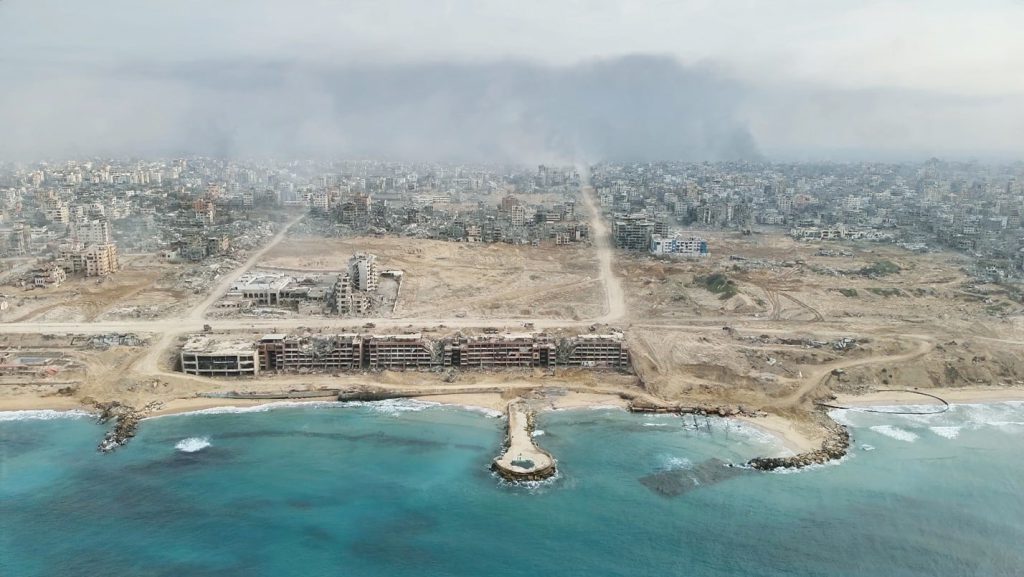
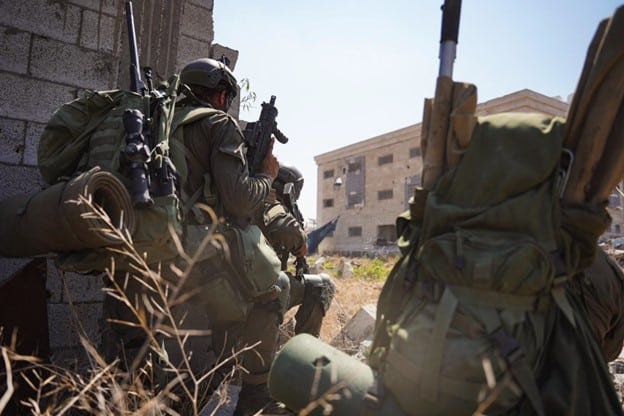
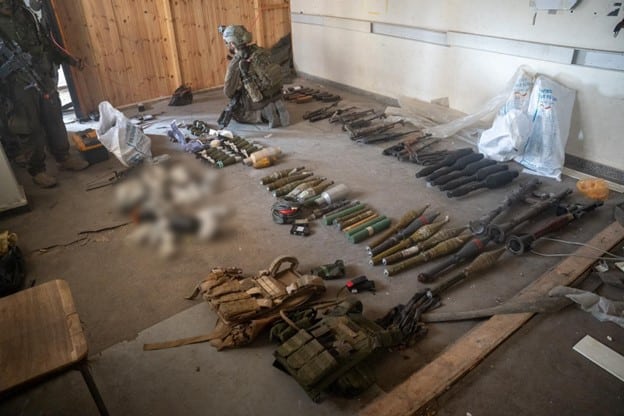

General overview
- On October 7, an existential war was forced upon the State of Israel. Israel’s enemies exploited an opportunity and launched a brutal terrorist onslaught led by Hamas from the Gaza Strip. This onslaught has led to 1,200 fatalities: 817 civilians, 315 IDF soldiers, 58 policemen and 20 Israel Security Agency fighters, in addition to thousands of injured. This most deadly assault in the country’s history also included the 378 dead from the Nova Festival, and encompassed 25 communities and 9 bases and outposts that were subjected to carefully premeditated raids. In this slaughter, 250 Israelis and foreigners were kidnapped into Gaza by Hamas, Islamic Jihad, and ordinary civilians that raided the Gaza Envelope region.
- The terrorists that raided the south were heavily armed. Reportedly they only made use of 8% of the total weaponry at their disposal. The horrific documentation of the atrocities committed, which was used for Internet-based psychological warfare, is a demonstration of the determination of the terrorists not merely to murder Israelis, but also to humiliate the State of Israel and spread panic and insecurity.
- The next day, on October 8, Hezbollah embarked on a medium-intensity war of attrition against the north of the country, which led to a decision to evacuate over 61 thousand residents from the northern border to hotels and hostels around the country. So far Hezbollah has fired over 5,500 projectiles, including missiles, rockets, UAV’s and anti-tank guided missiles, costing the lives of 14 soldiers and injuring 53 others, including 7 civilians.
The complete details:
The “Israel War Portal”, which is the war’s database set up by the research department in the Israel Defense and Security Forum (IDSF), tracks the war-related data and gets updated on a daily basis in Hebrew and in English. It includes the complete statistics of the war, original security analyses, influencing video clips and exclusive articles about the war’s heroism and its tragedies.
Warinisrael.org
- Starting on October 7, the State of Israel has engaged in a war in Gaza. At its peak, it included 300 thousand reserve military servicemen, 4 divisions and substantial achievements on the ground. Senior Hamas leaders have been killed, including Head of the Military Wing Mohammed Deif, Marwan Issa (in a tunnel inside the Gaza Strip) and Saleh Al-Arouri (in a building inside the Dahia Quarter in Beirut), over 14 thousand Hamas fighters have been killed, and substantial terrain units have been occupied. The Philadelphi Corridor and the Netzarim Corridor have come under total IDF control, 110 hostages have been returned in a hostage release deal, 7 have been extracted alive and 19 bodies have been returned. Beside the achievements, we have paid a heavy price – 312 IDF fatalities, thousands of injured, including amputees.
- Besides the impressive tactical achievements, the State of Israel is still fighting to achieve the war’s strategic objectives.
- In Judea and Samaria, the security forces have continued to enable focusing on the Gaza and northern border arenas by arresting over 4,000 terrorists, 1,750 of whom are Hamas terrorists. Over 300 have been killed. The daily activity has prevented hundreds of terrorist attacks as well as thwarting October 7-style preparations. There is no way of guaranteeing that terrorism in Judea and Samaria will be foiled without the security forces’ daily activity.
- From the regional perspective, the war can be described as an Israel-Iran war, in view of the premeditated campaign that broke out at the peak of a years-long force-building process involving Iran itself and its proxy – its launch cells in the region. Hamas has amassed Iranian armaments for years, besides a $360-million annual budget; Hezbollah has precision missiles, armaments and an annual investment of $700 million; the Houthis in Yemen have fired dozens of Iranian missiles at Israel, and other militias in the region might join the fight.
- Iran itself entered the battle when it launched some 350 targets toward Israel on the night of April 14. This followed the blowing up of a Revolutionary Guards compound in Damascus, which led to the deaths of Hassan Mahdavi, commander of the Syria and Lebanon Division, and six other senior Iranians. Air Force pilots intercepted many targets in mid-air. Other targets were intercepted by the Arrow systems and the American destroyers. This entire action was made possible thanks also to the Middle East Air Defense (MEAD) Alliance – under the command of the American Central Command (US CENTCOM), through which the region’s Arab countries and Israel share intelligence to achieve superior air defense, including radar and air defense data.
Overview
- The war harnessed the entirety of the State systems in favor of the effort to achieve victory, including large numbers of reservists who left their homes and their places of work, the financial burden of procurement of armaments and maintaining the evacuees, and the need to psychologically restore the Israeli deterrence.
- The Israel Defense and Security Forum considers spirit to be an overriding national imperative as a key factor in achieving victory in this war. The spirit of the fighting troops is what makes the impressive battlefield achievements possible, and national cohesion, under the banner of “Together we win”, are a fundamental condition for harnessing the public and the state organs in favor of achieving the objectives of this war. We call on the general public, its elected officials, and the State apparatus, to put aside political considerations, to abstain from disrupting public order, to support our soldiers, and to rise to the occasion.
- In our professional opinion, the State of Israel has no option of ending the war in Gaza with an outcome that falls short of victory, meaning fulfillment of the war’s objectives as these have been defined. Should the IDF withdraw without having achieved its goals, this will send a message of weakness in the wake of the severe blow to the Israeli deterrent on October 7. It will be a green light for Iran and the other regional players to increase their aggression for the sake of achieving their goals.
The international pressure on Israel to work toward a ceasefire and to establish a Palestinian State is totally divorced from the Middle Eastern reality. Rewarding terrorism in the form of a Palestinian state will substantially undermine Israeli security. It will expose virtually the entire population to direct terrorist attacks, where the attackers will enjoy the topographic advantage of elevation and physical proximity to population centers, and will make the IDF’s mission of securing our borders that much more difficult or, indeed, impossible. Such a move is not going to put an end to the conflict, it is not practically feasible (in terms of partitioning Jerusalem, refugees and evacuation of Israelis), and it will sever the connection between the people of Israel and a significant part of its motherland.The Palestinian Authority does not constitute a viable partner for a long-term settlement and in any case it is shunned by the majority of the Palestinian public. The Biden Administration’s pressure to establish a “revitalized Palestinian Authority” sets unrealistic terms, which are contrary to the Palestinian Authority’s vision and original premise, within which armed struggle against Israel is a fundamental principle. Although the Palestinian Authority does maintain relations with Israel, and even though it is more pragmatic than the Hamas terrorist organization, it is nevertheless committed to the struggle against Israel through its daily incitement in the education system and in the media. It pays $370 million annually as wages to terrorists – including to the Nukhba terrorists, its leaders vociferously supported the October 7 assault and even went so far as to encourage the Palestinian public to re-enact the massacre in Judea and Samaria (see “Praiseworthy Attack”: How the Palestinian Authority and Fatah Reacted to October 7 and Why They Cannot Govern Gaza).

